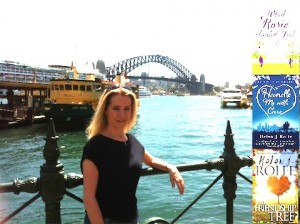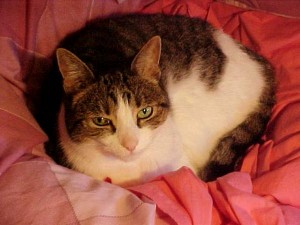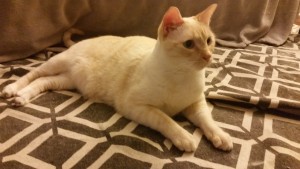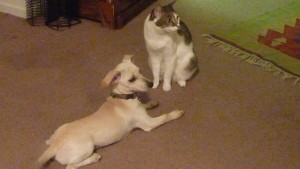

Co-Authors Kathleen Harryman and Lucy Marshall talk about their collaboration on The Promise, a World War II romance.
Lucy Marshall (left)
Kathleen Harryman (below)
Kathleen: I’ve known Lucy for years, she’s a superb actress and friend. We first worked together on my thriller When Darkness Falls; Lucy played The Yorkshire Slasher in my promotional film. When she came to me about a World War II romance, I was on board from the beginning.
Lucy: I have always been so interested in Kathleen’s work, I find her so inspiring and caring. She’s a wonderful friend, and I’ve really enjoyed reading her books. I have read When Darkness Falls three times now. It’s hard not to read it without imagining myself playing the main character when you’re an actor.
I’m always told, “if you are struggling for acting work then make your own.” It is a source of inspiration which keeps me furthering my belief not only in myself but also in helping others.
I used to spend most of my weekends in my caravan on the Yorkshire coast. It was a war memorial in Filey that started to give me the idea for The Promise. The stories around World War II have captivated me for many years. As I had a lot of time to myself, I started to think of the story of one girl’s courage and passion to help in the war.
After I worked with Kathleen on When Darkness Falls, I knew we both had a passion for bringing stories to life, and I needed to work with her again. When I asked Kathleen if she could help me write a script from the synopsis of The Promise, it overjoyed me when she wanted to turn it into a book. I can’t thank Kathleen enough for all the hard work she put into researching and bringing each character to life.
 Kathleen: I’d always thought about writing a story based on my grandfather, who died in France, as part of the second phase in the D-Day Landings. My dad was only a small boy when his dad died. The stories he’d tell me, and those of my great uncles, filled my mind with such pride and awe. Lucy gave me that shove, and together we merged Lucy’s idea for a World War II love story with my grandfather’s bravery. We also incorporated the stories of my other family members. In Arthur Shearsmith’s chapter, this really happened. Arthur Shearsmith was my mum’s dad (my grandfather) and having undergone his training ready to fight, his appendix burst as they were about to leave for France. He never made it to France or the frontline. Instead, the military utilised his skills as a metalworker in Hull. These personal stories helped to shape mine and Lucy’s vision for The Promise and the story.
Kathleen: I’d always thought about writing a story based on my grandfather, who died in France, as part of the second phase in the D-Day Landings. My dad was only a small boy when his dad died. The stories he’d tell me, and those of my great uncles, filled my mind with such pride and awe. Lucy gave me that shove, and together we merged Lucy’s idea for a World War II love story with my grandfather’s bravery. We also incorporated the stories of my other family members. In Arthur Shearsmith’s chapter, this really happened. Arthur Shearsmith was my mum’s dad (my grandfather) and having undergone his training ready to fight, his appendix burst as they were about to leave for France. He never made it to France or the frontline. Instead, the military utilised his skills as a metalworker in Hull. These personal stories helped to shape mine and Lucy’s vision for The Promise and the story.
Lucy: I’ve had many people tell me how much they love The Promise. How the story has sent them on a roller coaster of emotions and how they have told all their friends about it. I knew what would happen in the story and it still had me bursting into tears when reading it.
One of my acting friends bought The Promise for her mother as her holiday read. She loved it so much she told all her friends and people on holiday to read it.
I feel so admired when people say how much they loved it and how they couldn’t put it down and didn’t want it to end. I’m always having a look at Goodreads and Amazon for the reviews, I just can’t help myself.

Kathleen: The Promise isn’t only about the war and the historical facts surrounding World War II. It’s about the people that fought, and that remained, working together to keep the country going. It’s about real people, and real circumstances interweaved with fiction. I think that’s why readers go on a journey with each character, they really feel their struggle and uncertainty, and their loss. Maybe it’s why The Promise has had so many great book reviews and why Readers Favourite awarded it five stars.
Lucy: When I mentioned to Kathleen that I had already thought of some actors to play the roles, she wanted to meet them straight away. I got all my friends to send in their head shots and then we had a meeting at Kathleen’s. They all felt so welcomed and were all excited to read the story. I can’t wait to see them bring each character to life and start working with them. They are all so passionate about their work.

Kathleen: Lucy’s suggestion to get some of her acting friends to come around to my house was brilliant. We sat munching on crisps and biscuits, drinking copious amounts of coffee, discussing The Promise. I got such a buzz out of it, and we based many of the characters on the people sat around the table that night. It really helped to build the characters, and what I also found was that the story took a different shape because of it. We made connections and relationships between characters that night that we hadn’t even thought of; it was how everyone interacted and talked that brought about such a shift in the story. For a writer to see and talk with your characters, in your head is how a story normally comes together. But to have them right there physically with you, talking and laughing… wow, it blew my mind.
Lucy is a source of inspiration and her enthusiasm is encapsulating. I’d definitely write another book with her. We got on so well, bouncing ideas off each other until the words flowed.
Kathleen: Co-writing The Promise with Lucy was a dream. Lucy and I have a healthy friendship. We both understand the day-to-day pressures each of us are under. This made our co-author collaboration for The Promise work seamlessly, allowing each other time and space to form ideas and to get it down on paper. Lucy’s dyslexic, so it made it easier for me to do the writing and research. Personally I feel that’s why our co-author collaboration worked so well, with just one of us doing the writing. It also allowed for the book to have one distinctive writing style.
I’m lucky because Lucy had already scoped out her plans for the story when we talked about writing The Promise. I just added the meat to the bones, undertaking the writing and research. We went on location together, with Lucy showing me the house which she wanted to use as the convalescence home, which would become The Turnstones. We also spent a lot of time going over ideas, on how we wanted the story to flow. Lucy’s great because she had some clear and clever ideas. I just made them work in the story. I think our partnership worked because we are friends and we both respect each other. I’ve seen Lucy on stage, and she’s captivating. It was that magnetism that instantly made me sign onto the project.
The key things that worked for me when writing The Promise with Lucy, was the amount of planning and discussion we had at key stages of the book. As character relationships changed and developed, we’d talk about how this impacted on the story and where we wanted to go with it. Because Lucy had some really clear ideas and an incredible outline, I understood what she wanted. We also allowed each other time and room for ideas to grow. Never adding deadlines onto each other, made our working relationship easier. What might surprise people, (given that both Lucy and I are the creative type), is that we have never argued. We get along really well, and admire and respect each other, we’re open and honest, and I feel that The Promise in part reflects our own relationship.
Lucy: I couldn’t have felt more comfortable working with Kathleen. She is a pure delight and so inspiring. She was so supportive when I mentioned about my dyslexia and we worked together to bring The Promise to life. I always look forward to our little meet ups as we both always have so much to catch up on. Her husband and daughters always make me feel so welcome when I go to see them. I keep thinking of little ideas that could be our next project to work on. When I worked as the Yorkshire Slasher in When Darkness Falls I knew it was only just the start and we would be working together so much more. I ended up reading When Darkness Falls again and then read The Other Side of the Looking Glass. Both of those books pulled me in and I couldn’t put them down. She is so creative and I’m not surprised she is an award-winning storyteller. She is a true friend and I am so happy we get to share this journey of The Promise together. I hope we get to do something else and share the experience again.
I loved our time onset of When Darkness Falls, Kathleen knew exactly what she wanted and how she wanted me to play the Yorkshire Slasher, I loved it! Thank you for everything you have done Kathleen, I really can’t thank you enough.
CONNECT WITH KATHLEEN & LUCY
Amazon (The Promise)
Kathleen Harryman: Amazon Author Page
Kathleen Harryman: Website
Lucy Marshall: Twitter
Kathleen Harryman: Twitter
Kathleen Harryman (BookBub)



























































